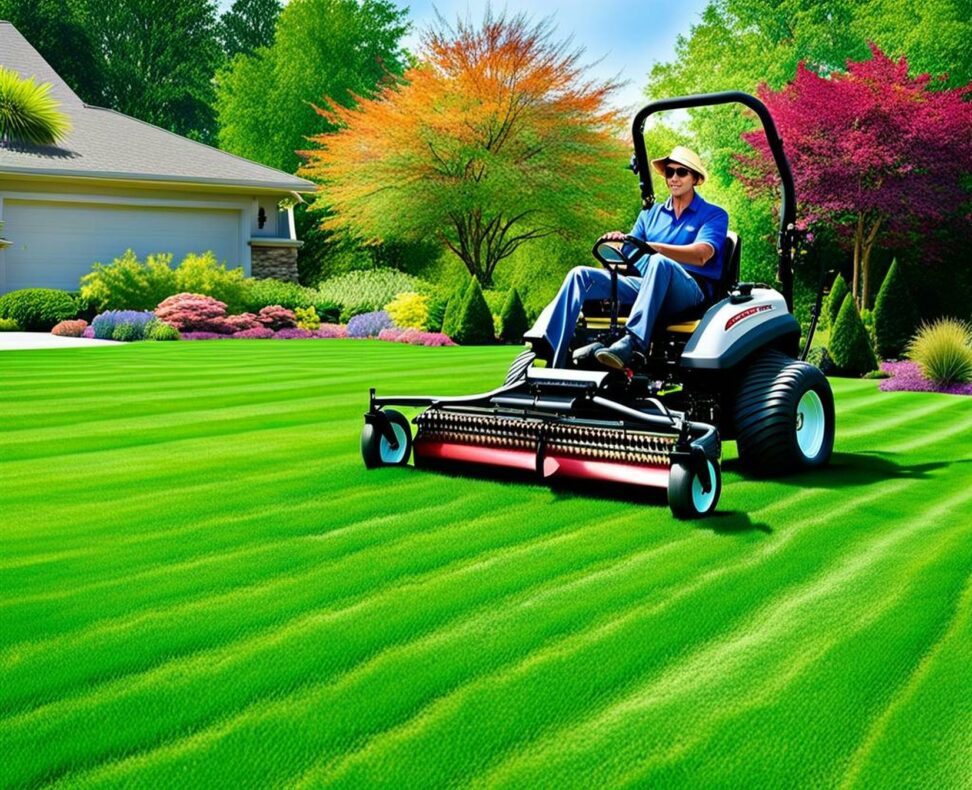Reinvigorate Your Lawn with a Dethatcher and Aerator Combo
Is your lawn looking tired and lackluster? Do you deal with issues like dry patches, compacted soil, moss growth, or poor drainage? The solution may be right under your feet - with the thatch layer.
Thatch is a tightly intermingled layer of organic matter like grass clippings, stems, and roots that accumulates on your lawn's surface over time. While a thin layer of thatch is normal, too much buildup can prevent water, air, and nutrients from reaching the soil and grass roots. The result is a lawn that struggles to stay green and healthy.

What is Dethatching and Why is it Important?
Dethatching is the process of removing excess thatch buildup by raking or power-raking the lawn. This allows moisture, fertilizer, air, and sunlight to better penetrate to the soil and roots below. Benefits include:
- Stimulates new growth by allowing nutrients to reach the soil.
- Prevents disease and pests that thrive in thick thatch.
- Improves drainage and reduces water runoff.
- Allows grass roots to grow deeper for a healthier, more drought-resistant lawn.
When to Dethatch Your Lawn
The best times to dethatch are early spring, before grass resumes active growth, or early fall when growth begins to slow. Avoid dethatching during hot summer months when heat stress could damage your lawn.
Signs Your Lawn Needs Dethatching
Watch for these clues that it's time to dethatch:
- Thatch layer over 1/2 inch thick.
- Puddles form on the lawn after rain instead of water soaking in.
- Moss grows in thick patches.
- Grass roots are short and shallow.
- Lawn feels spongy underfoot.
- Lackluster lawn health and growth.
What is Aeration and Why is it Important?
Aeration involves removing small plugs of soil to create holes that allow air, water, and nutrients to better reach the grass roots. This relieves soil compaction and encourages deeper root growth for a healthier, more vigorous lawn.
When to Aerate Your Lawn
The best time for aerating is during active growth periods in spring and fall. Avoid aerating during the heat of summer or cold of winter when grass is stressed.
Signs Your Lawn Needs Aeration
- Compacted, hardened soil.
- Standing water or runoff after rain.
- Thin, patchy areas of grass.
- Grass roots grow horizontally rather than down.
- Footprints remain visible on the lawn.
Top Reasons to Use a Dethatcher-Aerator Combo
Rather than buying separate dethatching and aerating tools, a combination tool offers these benefits:
- Saves time by completing two tasks in a single pass.
- More economical than purchasing two separate tools.
- Easy storage of a single combo tool.
- Achieve a thicker, healthier lawn fast.
What to Look for in a Dethatcher-Aerator Combo
Key features to consider when selecting a dethatcher-aerator include:
- Powerful motor to tackle thick layers of thatch.
- Adjustable tine depth settings for custom dethatching and aerating.
- Collection bag to gather up debris.
- Durable tines that stand up to heavy use.
- Safety features like easy-grip handles and a power switch.
- A reputable brand known for quality and performance .
Reviews of the Best Dethatcher-Aerator Combos
Greenworks Dethatcher & Aerator
This electric combo tool consistently earns top reviews for its power and ease of use. The 14-inch dethatcher width makes quick work of large yards. It also includes an aerator attachment. Depth settings adjust from -5 to +5 mm for customized lawn care.
Yard Butler Twist and Lock Combo
This manual dethatching and aerating tool provides an economical, eco-friendly option. The ergonomic handle makes it easy to twist into the soil. It's great for smaller lawns or spot treating problem areas. Rust-proof construction ensures longevity.
Brinly-Hardy 3-in-1 Dethatcher, Aerator, Spreader
Truly an all-in-one lawn care tool, this powerhouse also includes a drop spreader to apply seed or fertilizer in the same pass. Its dethatcher attachment features 10 high-carbon steel blades for aggressive debris removal. An added bonus is its electric start ignition.
How to Use Your Dethatcher-Aerator Combo
Follow these tips for the best results from your dethatching and aerating sessions:
- Mow the lawn on a high setting before dethatching to avoid scalping.
- Clear away debris like sticks and rocks first.
- Make 2-3 passes in perpendicular directions for complete coverage.
- Work slowly - rushing can damage the machine or lawn.
- Wear protective goggles and closed-toe shoes for safety.
- Allow 2-3 days of rest before mowing again.
Most lawns need dethatching every 2-3 years and annual aeration for continued vigor. Adjust frequency based on thatch buildup rate and your lawn's overall health. Proper mowing, fertilization, watering and other care will keep your grass thriving in between sessions.
Reinvigorate your lawn and bring it back to lush green glory with the power of a dethatcher-aerator combo. Your grass will thank you!